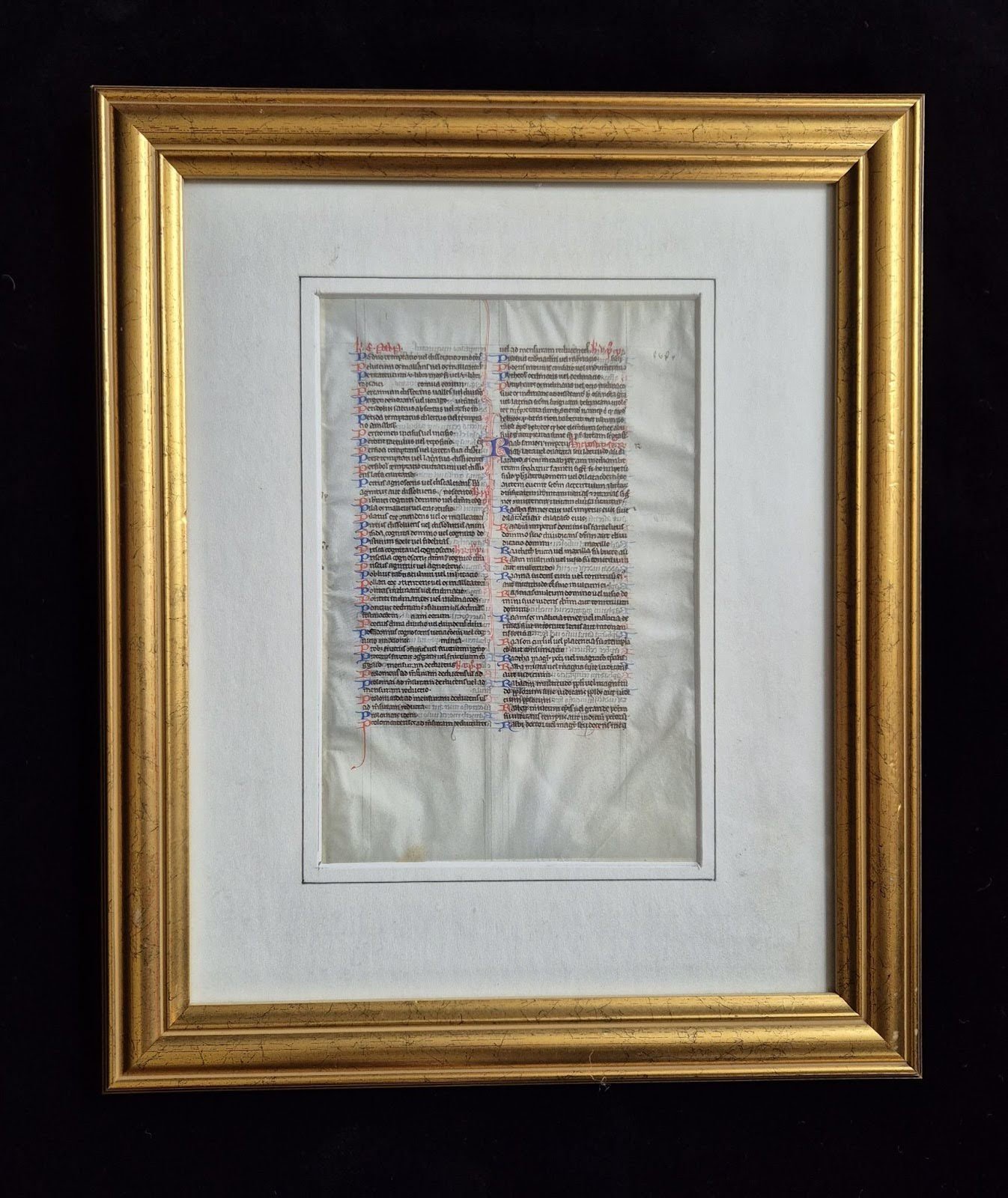 Image 1 of 1
Image 1 of 1


Interpretation of Hebrew Names, on a leaf from a Bible, in Latin, decorated manuscript on vellum
Interpretation of Hebrew Names, on a leaf from a Bible, in Latin, decorated manuscript on vellum
[Paris, c.1250-1275]
Frame 24 x 29cm; observable image 11.5 x 17cm. 46 lines, two columns written in a small, neat Gothic bookhand, ruled in plummet, rubrics in red, capitals in alternate red and blue, two-line initial on the recto with flourishing in red; Framed and glazed, with both recto and verso visible beneath the glass.
A handsome example of 13th-century manuscript production in Paris, displaying the characteristic script, layout and thin, fine vellum of portable, standardised so-called Paris Bibles. The wide margins contain abbreviated instructions and a guide letter ‘R’ for the scribe. The glossary contains names beginning with P and R from the alphabetised list of Hebrew Names, the common version of which ran from ‘Aaz’ to ‘Zuzim’ and would have been bound at the end of the original manuscript, after the biblical books and prologues from the Old and New Testaments. Likely a sister leaf to the group of 40 leaves sold at Sotheby’s (4 December 2007, Lot 6) from ‘a Bible probably made for use in the University of Paris in the third quarter of the 13th century’. Their catalogue suggested that the style of the Bible’s historiated initials was close to the output of the Parisian workshop of Johannes Grusch (see Branner, Manuscript Painting in Paris during the Reign of St Louis, 1977).
[FtC 479]
Interpretation of Hebrew Names, on a leaf from a Bible, in Latin, decorated manuscript on vellum
[Paris, c.1250-1275]
Frame 24 x 29cm; observable image 11.5 x 17cm. 46 lines, two columns written in a small, neat Gothic bookhand, ruled in plummet, rubrics in red, capitals in alternate red and blue, two-line initial on the recto with flourishing in red; Framed and glazed, with both recto and verso visible beneath the glass.
A handsome example of 13th-century manuscript production in Paris, displaying the characteristic script, layout and thin, fine vellum of portable, standardised so-called Paris Bibles. The wide margins contain abbreviated instructions and a guide letter ‘R’ for the scribe. The glossary contains names beginning with P and R from the alphabetised list of Hebrew Names, the common version of which ran from ‘Aaz’ to ‘Zuzim’ and would have been bound at the end of the original manuscript, after the biblical books and prologues from the Old and New Testaments. Likely a sister leaf to the group of 40 leaves sold at Sotheby’s (4 December 2007, Lot 6) from ‘a Bible probably made for use in the University of Paris in the third quarter of the 13th century’. Their catalogue suggested that the style of the Bible’s historiated initials was close to the output of the Parisian workshop of Johannes Grusch (see Branner, Manuscript Painting in Paris during the Reign of St Louis, 1977).
[FtC 479]

